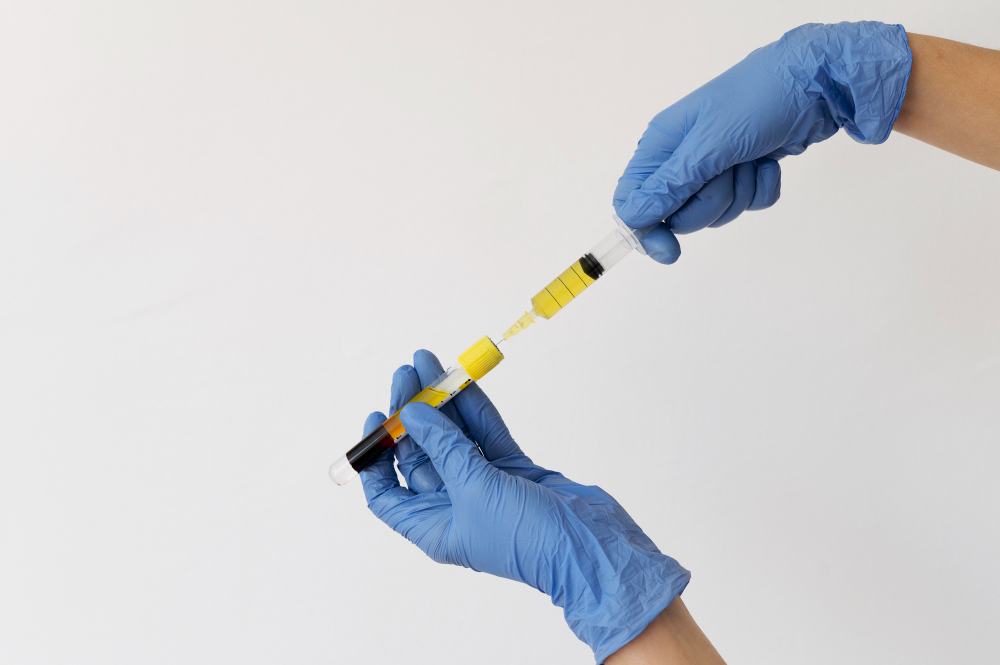Introduction: The Evolution of Biologic Therapies
Over the last decade, regenerative medicine has reshaped how clinicians approach musculoskeletal and degenerative conditions. Instead of relying solely on pharmaceuticals or invasive surgeries, medicine is moving toward biologic, patient-derived therapies that support natural repair mechanisms.
Among these, PRP injections — or platelet-rich plasma therapy — have become one of the most clinically studied and widely adopted procedures. PRP bridges the gap between conservative management and surgical intervention, offering a minimally invasive method to stimulate healing through a patient’s own biologic material.
Yet despite its growing use, success with PRP depends on one critical factor: evidence-based application.
What Are PRP Injections?
Platelet-rich plasma (PRP) is an autologous blood product derived by centrifuging a patient’s blood to concentrate platelets within plasma. Platelets are rich in growth factors such as PDGF, VEGF, and TGF-β — molecules essential for cell recruitment, angiogenesis, and tissue regeneration.
When delivered to injured or degenerative tissues, these concentrated growth factors accelerate healing, modulate inflammation, and stimulate extracellular matrix production.
A PRP treatment involves three key steps:
- Drawing a small volume of the patient’s blood.
- Using a standardized centrifugation process to isolate platelet-rich plasma.
- Injecting the PRP into the targeted tissue or joint under sterile conditions.
The treatment is simple in concept but complex in execution — and that complexity is where evidence and standardization matter most.
Evidence-Based Indications for PRP Therapy
PRP therapy is not a one-size-fits-all intervention. Its biologic profile varies based on preparation method, indication, and patient factors. Clinical research over the last decade has clarified where PRP provides measurable benefit — and where evidence remains limited.
1. Musculoskeletal and Sports Injuries
PRP has shown consistent success in treating chronic tendinopathies such as lateral epicondylitis, Achilles tendinopathy, and patellar tendinitis. Studies demonstrate improved pain reduction and function compared to corticosteroid or saline injections.
In soft-tissue injuries, PRP promotes collagen remodeling and angiogenesis, helping athletes recover faster with fewer complications.
2. Osteoarthritis (OA) Management
PRP is now recognized as a regenerative alternative for knee osteoarthritis. Meta-analyses reveal that intra-articular PRP injections significantly improve pain and mobility compared to hyaluronic acid or placebo. The biologic effect appears to derive from anti-inflammatory cytokine release and synovial regeneration rather than structural cartilage regrowth.
3. Post-Surgical Healing
Orthopedic and plastic surgeons increasingly use PRP to accelerate wound healing and reduce recovery times after ligament reconstruction, fracture repair, and cosmetic procedures. The autologous nature of PRP makes it particularly safe in post-operative contexts.
4. Expanding Frontiers
Beyond orthopedics, PRP has been explored in dermatology (hair restoration, skin rejuvenation), dentistry (bone graft integration), and aesthetic medicine. While results vary, the safety profile remains consistently high across all disciplines.
What the Evidence Says: Clinical Outcomes
The clinical literature surrounding PRP injections continues to expand. A 2023 systematic review in The American Journal of Sports Medicine found that PRP improved pain and functional outcomes in chronic tendon injuries compared to placebo. Another large meta-analysis covering over 30 randomized controlled trials confirmed PRP’s efficacy in knee OA, showing moderate-to-strong improvement in pain scores and physical function at 6–12 months.
However, variability remains an ongoing challenge. Studies using different PRP preparation systems produce inconsistent platelet concentrations and leukocyte profiles — making it difficult to compare results directly.
This variability underscores a key point: PRP’s success is as dependent on preparation quality as on clinical skill. Standardized systems like Tropocells PRP ensure reproducibility, sterility, and consistent biologic potency — parameters that are critical for translating clinical evidence into predictable outcomes.
Addressing the Stem Cell Confusion
One persistent source of confusion among patients (and occasionally clinicians) is the misconception that PRP injections and prp stem cell injections are the same.
They are not.
PRP contains growth factors, not stem cells. It stimulates the body’s own repair mechanisms but does not replace or regenerate tissue directly. Stem cell therapies, in contrast, involve the delivery of viable progenitor cells — a process that carries different regulatory, ethical, and clinical implications.
While both belong under the regenerative medicine umbrella, they represent distinct biologic approaches. Accurately communicating this difference builds patient trust and aligns expectations with real, evidence-based outcomes.
Standardization and Reproducibility in PRP Practice
The diversity of PRP preparation methods is one of the biggest challenges in interpreting outcomes across studies. Platelet concentration, leukocyte content, and plasma purity vary widely depending on the system used.
For meaningful, reproducible results, standardization is essential. This begins with using certified consumables and validated centrifuge systems.
Tropocells PRP Kits — available through Accretion Portal — are designed to provide consistent platelet yield and purity by maintaining closed, sterile preparation environments. When paired with Horizon centrifuge systems, clinicians achieve:
- Controlled g-force calibration.
- Uniform separation of plasma layers.
- Reduced contamination risk through closed handling.
Standardization not only improves patient outcomes but also strengthens the scientific credibility of PRP research.
Patient Outcomes and Real-World Impact
PRP therapy offers several tangible benefits for patients — benefits that translate into improved satisfaction, reduced downtime, and fewer complications.
Clinical Benefits Observed
- Faster Recovery: Patients experience accelerated soft-tissue healing due to localized growth factor release.
- Reduced Pain and Inflammation: PRP modulates cytokine activity, lowering chronic inflammation without the side effects of steroids.
- Improved Function: Particularly in OA and tendon injuries, PRP enhances mobility and tissue resilience.
- Safety: As an autologous product, PRP minimizes the risk of allergic reaction, infection, or systemic side effects.
However, realistic expectations are crucial. PRP is not a “quick fix” or replacement for structural repair — it’s a biologic therapy that optimizes the body’s natural healing capacity when used appropriately and consistently.
Accretion Portal Solutions: Designed for Clinical Precision
Accretion Portal supports physicians in delivering reproducible, evidence-based regenerative care. Our technologies are designed to maintain clinical integrity, workflow efficiency, and biologic purity.
- Tropocells PRP Kits: Medical-grade, closed systems ensuring precise platelet concentration and minimal red cell contamination. Each kit is certified for autologous reinjection and validated across multiple specialties.
- Horizon Centrifuge Systems: Reliable centrifuges engineered for controlled spin speeds and programmable protocols. Compatible with multiple PRP tube configurations to ensure consistent separation every time.
By integrating Tropocells and Horizon systems, clinics standardize preparation — transforming biologic variability into consistent, measurable performance.
Physician Takeaways
- PRP injections are a clinically supported biologic option for musculoskeletal, orthopedic, and post-surgical applications.
- Evidence shows significant improvements in pain and function when standardized systems are used.
- PRP treatment differs from prp stem cell injections — it activates natural repair, not direct regeneration.
- Clinical success depends on preparation integrity, sterile workflow, and biologic reproducibility.
Conclusion: Where Science Meets Practice
The true value of PRP lies not in marketing claims, but in measurable, reproducible outcomes backed by evidence. For physicians, success means using standardized systems, selecting the right patients, and communicating realistic expectations.
Certified preparation kits and validated centrifuges bring uniformity to a biologic process that demands precision. This is how regenerative medicine matures — through standardization, safety, and science-driven practice.
PRP injections are no longer experimental; they are an evidence-supported option in modern medicine. Their continued credibility depends on physicians who treat them not as a trend, but as a biologic tool guided by data and integrity.









